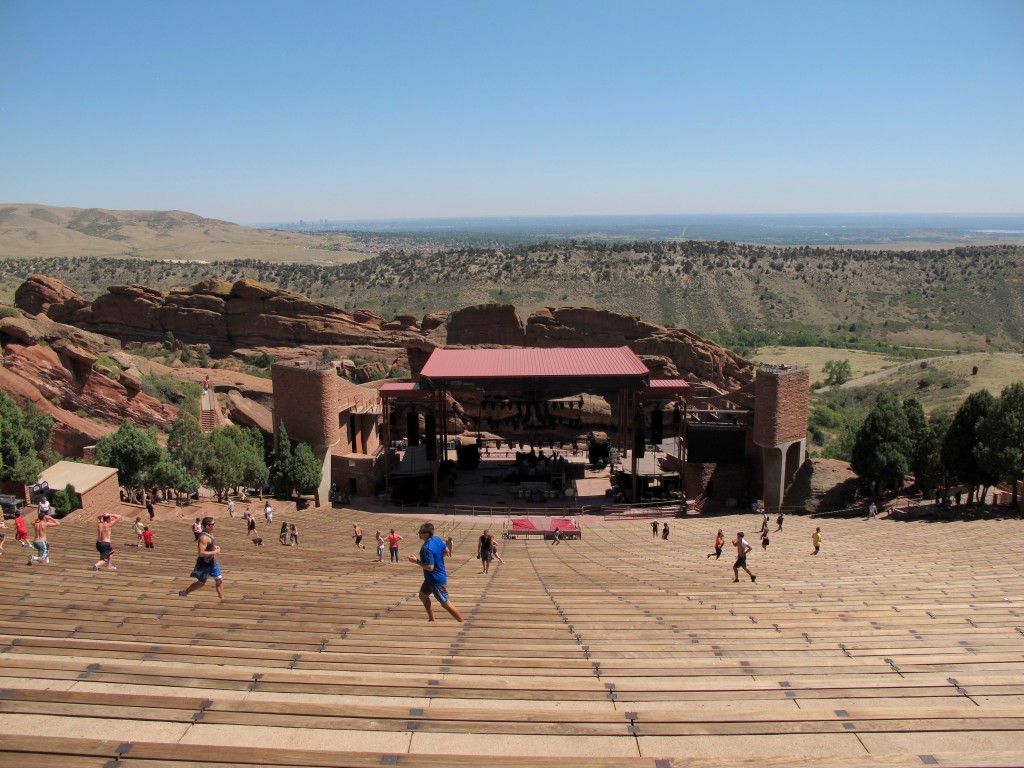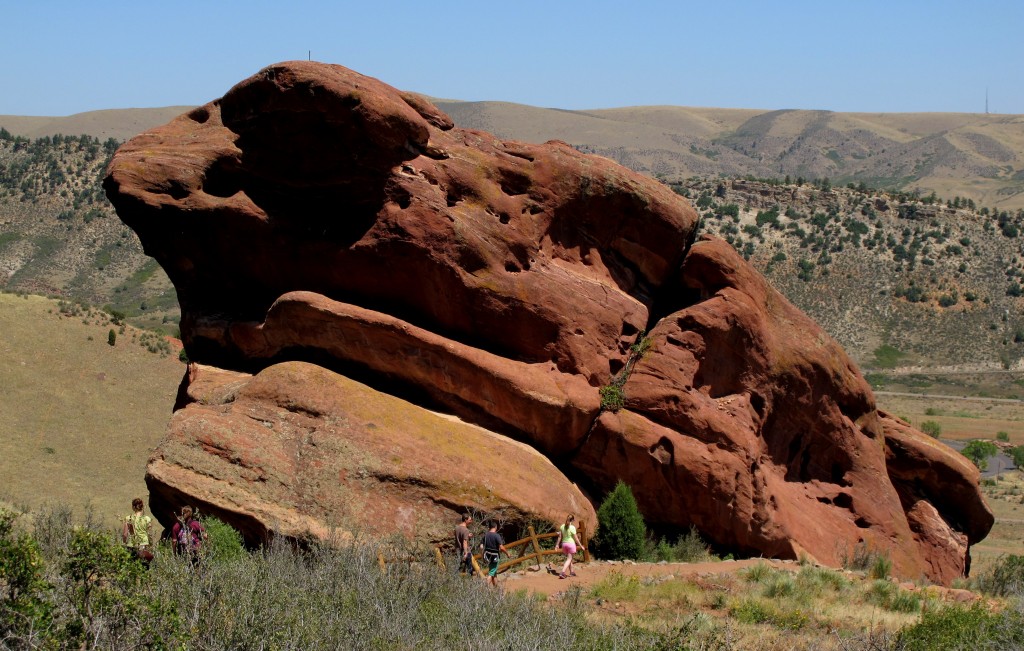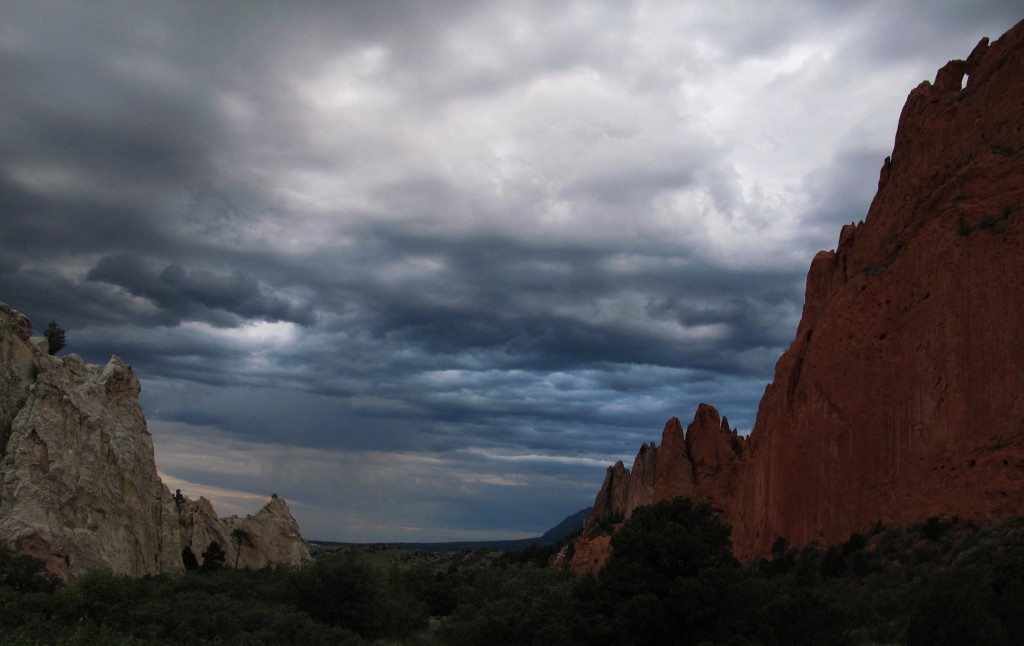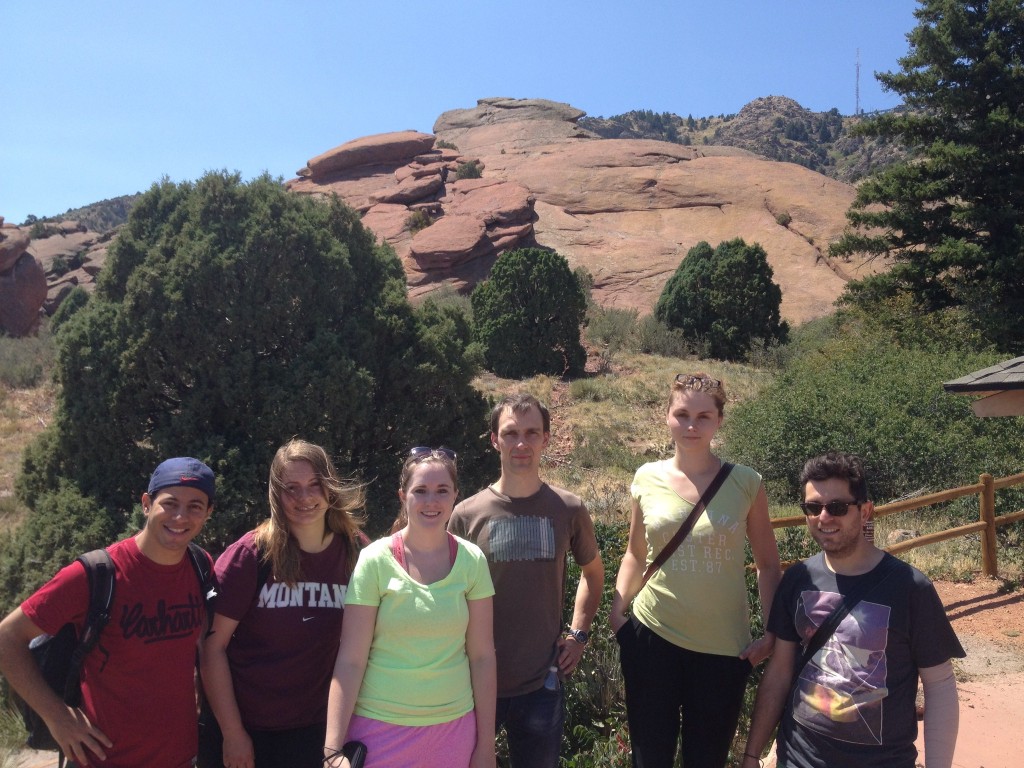EGU’s Science Communications Fellow, Edvard Glücksman, is blogging live from the United States as he takes part in a week-long study tour with other members of the Emerging Leaders in Environmental and Energy Policy Network (ELEEP), a joint project of the Atlantic Council of the United States and the Ecologic Institute. Check out below for his first post from overseas and, if you have any questions or comments, please contact Ed by email.
Hello everyone and greetings from the United States! Fortunate enough to be one of the first arrivals, I spent the first full day here hiking with some of my colleagues in the beautiful Colorado wilderness around the unique Red Rocks Amphitheatre.
Local residents exercise up and down the Red Rocks amphitheatre’s seats. Apart from on concert nights, the area is usually entirely open to the public. Downtown Denver can be seen on the horizon just left of center. (Credit: Edvard Glücksman)
Located to the west of Denver in the small town of Morrison, Red Rocks is a geological wonder. Featuring three large rocks perfectly arranged for optimal acoustic conditions, this stunning location has been used for open-air concerts since the early 20th century, and perhaps even earlier by Native Americans from the Ute tribe. Legendary artists such as Sting, U2, or even The Beatles have performed at Red Rocks and consider it a highlight of their careers.
Our group hikes next to a boulder bearing the distinctively red colour found throughout exposed areas of the Fountain Formation across Colorado and Wyoming. (Credit: Edvard Glücksman)
The area around the amphitheatre, Red Rocks Park, is equally beautiful, replete with exposed red sandstone rocks distinctive of the wider Fountain Formation, a bedrock unit from the Pennsylvanian age, between 290-296 million years old, consisting primarily of conglometarte, sandstone, or arkose.
Garden of the Gods near Colorado Springs, also part of the Fountain Formation. Photo taken last year. (Credit: Edvard Glücksman)
After watching the fitness-crazy locals exercise up and down the amphitheatre’s seating area, which can take up to 9,450 people on concert nights, we walked into the wilderness of the surrounding park, taking in the breathtaking landscape and the view of downtown Denver from a distance. The day before our rigorous study tour begins, at 1,966 m above sea level our hike was definitely the perfect ‘altitude training’ for the week ahead!
The ELEEP early arrivals. From left to right – yours truly, Mihaela Carstei, Kathryn Sparks, Janis Brizga, Agata Hinc, and Gerald Franz. (Credit: Edvard Glücksman)
By Edvard Glücksman




